JAMES GIBBONS LTD
Early Years
The company sometimes claimed to have been founded in 1670, by Thomas
Gibbons, and sometimes to have been founded in 1750. The possibility
is that Thomas Gibbons set up as a locksmith in 1670, that he was succeeded
by later generations of his family, and that the name of the company changed
with that of its owner at the time.
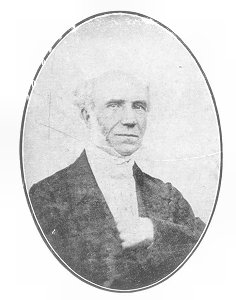 |
Left: James Gibbons,
born 1790.
Right: James Gibbons,
born 1820. |
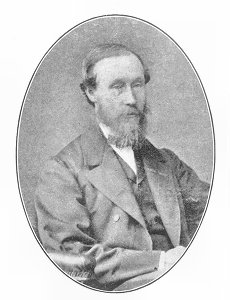 |
In 1750 a James Gibbons took over and that name stuck, not least because he was
succeeded by another James. The company (now split into two companies)
currently claim the date of 1670 and say that "Sir Christopher Wren put his
trust in James Gibbons' ironmongery". The company claimed to have been
owned by eight generations of the same family and it seems not to have been
incorporated as a limited company until some time in the first half of the
twentieth century.
|
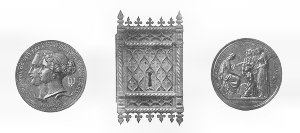 |
The medal awarded to the
company at the 1851 exhibition and what is presumably one of the
locks they exhibited there. |
It is safe enough to assume that Thomas Gibbons set up his
lock making business somewhere in Wolverhampton. At some time they
moved out to Church Street, probably in the second quarter of the nineteenth
century. They were certainly at St. John's Works, Church Street, by
the time of the Great Exhibition of 1851, where they exhibited and won a
prize medal. At the time they advertised themselves as making locks,
hinges and handles; when they branched out from lock making to door
furniture is not known.
| This advert appeared in
the catalogue for the Wolverhampton Arts and Industrial
Exhibition of 1884.
The kind of ornamental lock shown was the
type usual shown at exhibitions and was not necessarily typical
of their ordinary products.
|
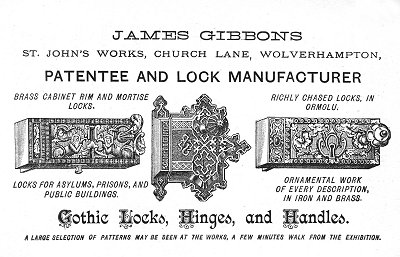
|
 |
Left: F. J. J.
Gibbons, born 1862.
Right: P. E.
Gibbons, born 1902.
|
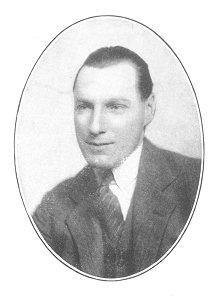 |
In 1897 the Wolverhampton and South Staffordshire
Illustrated described them as being lock makers, brass founders and makers
of builders' ironmongery and, in addition to locks, makes reference to
doorplates, knobs, handles, geared fanlight openers, panic doors, door
springs and "other metal furnishings for builders, etc."..
That publication also refers to them as having made
extensive improvements to their works in Church Lane but it is not clear
whether these are improvements within the buildings or new buildings. By
this time they also had offices and showrooms in London, Manchester,
Liverpool and Dublin.
|